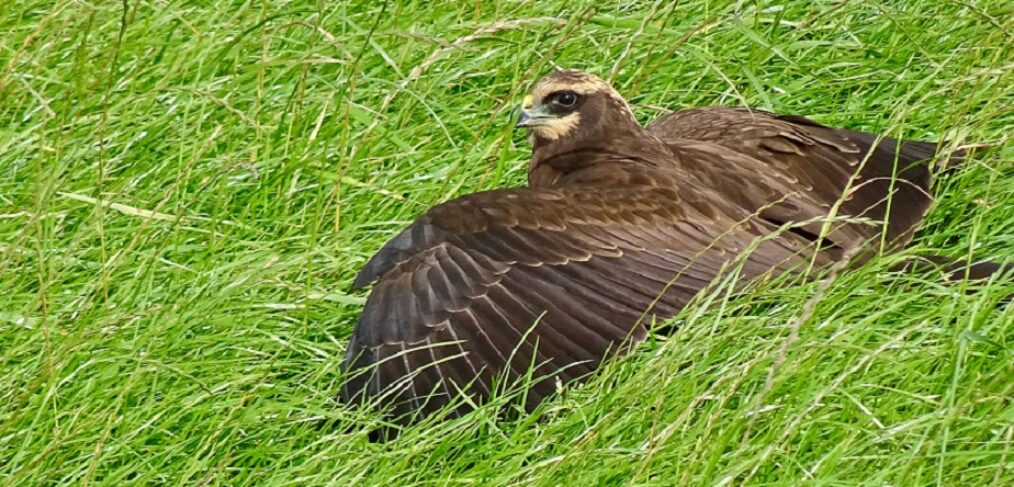
Species of the week #118 – western marsh harrier
The attractive plumage of marsh harriers is described with colours from the coffee house: The head of the female marsh harrier is cream-coloured with cinnamon-brown spots, the belly of the male is reminiscent of milk froth in colour, and the rest of the plumage is mocha to chocolate brown. Apart from the plumage colour, their V-shaped flight silhouette with wings stretched far upwards and the ground-hugging, swooping soaring flight are sure identification features.
| Distribution status in Rhineland-Palatinate | rare |
| Remaining occurance | Vorderpfalz, Rhine-Main area |
| Last sighting in Rhineland-Palatinate | currently |
| Habitat | Open landscape with adjacent reed beds |
| Threat | Loss of wetlands, intensive agriculture, hunting |
The marsh harrier is the largest European harrier, about the size of the buzzard. As with all harriers, the long wings, held in a flat but distinct V-position in soaring and gliding flight, are characteristic.
The Marsh Harrier usually stays close to the ground, except during migration or courtship flight, and builds its nest there, as the name suggests, sheltered in reed beds. Nests are also increasingly found in agricultural areas, such as grain fields, but always close to suitable feeding habitats.
To protect the chicks, the nests are often built from branches and old reeds directly above the water, so that nest predators have difficulty reaching the clutch. In Rhineland-Palatinate there are about 40 breeding pairs, mainly along the Rhine and its tributaries. In the Rhine-Main area, marsh harriers lay an average of four eggs, but usually only three nestlings fly out. In comparison: in the rest of Central Europe, nests contain an average of five eggs. It is not yet clear why one fewer egg is laid in our region.
In autumn, marsh harriers always migrate southwest for the winter. Marsh Harriers in Central Europe fly mainly towards the French and Spanish Mediterranean, sometimes as far as Africa. When it comes to food, the marsh harrier is not very choosy and very adaptable. Therefore, it is hardly dependent on certain prey. It feeds on insects, small mammals and birds of all kinds. However, the ground-level nests are often destroyed by agricultural machinery. In order to protect marsh harriers, it is important to strengthen their actual habitats, the wetlands, and to protect the alternative habitats in consultation with farmers.
Politically necessary:
- Rewetting and renaturation of wetlands.
- Protection of known breeding sites
- Promotion of extensive agriculture
For more exciting species of the week click here
Photo : By Gouwenaar – Own work, CC BY-SA 4.0, https://commons.wikimedia.org/w/index.php?curid=81929451
